Banking
Mastering Your Business Finances
Managing your finances effectively is crucial for your business’s success. The good news? Once you set up a solid banking system, it can serve you well for years without needing constant updates. Let’s dive into some best practices to make your business banking super simple.
Keep Business and Personal Accounts Separate
Maintaining a clear line between your business and personal finances is essential. Here’s why:
- Clarity and Profitability: It’s impossible to know if your business is on the right track if personal expenses are mixed in. Keeping them separate helps you see the true financial picture.
- Tax Efficiency: When tax time comes, having all expenses in one place makes it easier to gather deductions and ensure nothing is missed. This saves you time and simplifies expense categorization.
- Legal Protection: Mixing finances can “pierce the corporate veil.” If your business is an LLC, mixing accounts can void your liability protection. Keep them separate to safeguard your personal assets.
Now that we understand the importance of separation, let’s look at how to set it up effectively!
Use Multiple Accounts
Many business owners don’t utilize enough bank accounts, often operating with just one. This can lead to cash flow issues, especially during seasonal expenses. Here’s a structure to consider:
- Income Account: Deposit all business income here. This account doesn’t have check writing or debit card privileges. It’s solely for receiving income, which is then transferred to other accounts for expenses.
- Expense Account(s): Use this for operational expenses. Attach check writing or debit card privileges. If an employee needs a debit card, keep just enough funds for their potential needs, protecting the rest of you funds from theft and fraud.
- Savings Account: Set aside funds for future needs or unexpected expenses.
- Payroll Account: For businesses with employees, a dedicated payroll account streamlines salary management. Deposit funds when payroll liabilities are created to ensure they’re available when needed.
- Other Accounts: Depending on your needs, consider additional accounts for taxes, investments, or equipment upgrades.
Choosing the Right Bank
Your childhood bank or local credit union might not be the best fit for your business. Look for a bank that offers:
- Low fees
- Low or no minimum account balances
- Reliable connections to your accounting software
- Decent interest rates on balances
- Convenient features like mobile deposits and online statements
Finding the Perfect Fit
Banking: Choosing the Right Partner
When picking a bank, ask experienced business owners—not your broke friend—for recommendations. No bank is perfect, and sometimes you’ll need more than one to get all the features and options you want.
If you’re wondering what we recommend, we love and use Relay Financial. Here’s why:
- Great QuickBooks Connectivity: Ever had to reconnect your bank feed to QuickBooks over and over? Frustrating, right? Relay makes this seamless.
- Up to 20 Free Accounts: While you may not need 20 accounts, chances are you’re not using enough. Start with 3-4 accounts you need and try out their Auto Transfer Rule. This feature lets you schedule automatic transfers to move money from your main income account to specific spending accounts or buckets.
This approach aligns with the Profit First methodology by Michael Michalowicz. It’s a easy, funny read that explains how to manage your money better. I recommend it to most business owners. (Here’s the link to the book.)
A Success Story
The Profit First method works—here’s proof. A client of mine, a small business owner with a thriving business, hadn’t paid taxes in years. When we finally filed, the tax bill was massive. But guess what? They were relieved. Why? They had faithfully followed Profit First, setting aside money in a tax savings account. When it was time to pay, they had more than enough.
Imagine not paying taxes for three years and still being prepared when the bill comes. That’s the power of this system!

